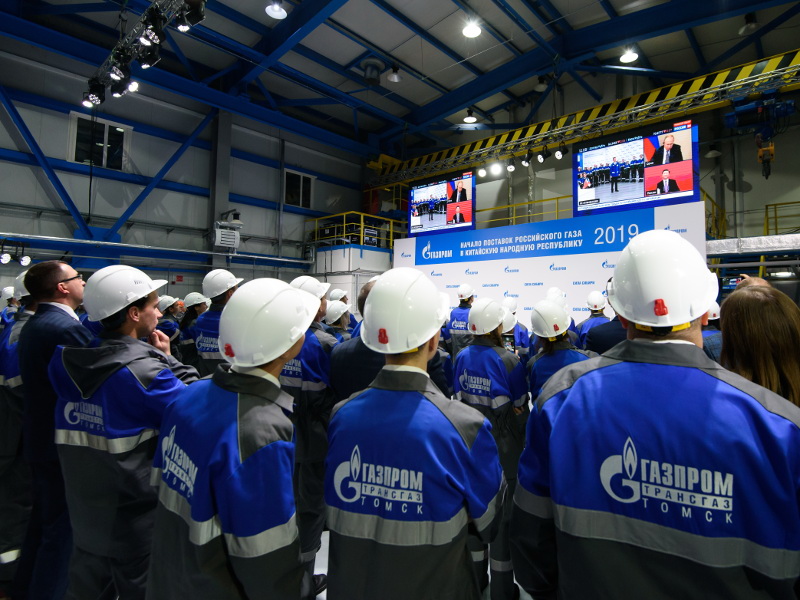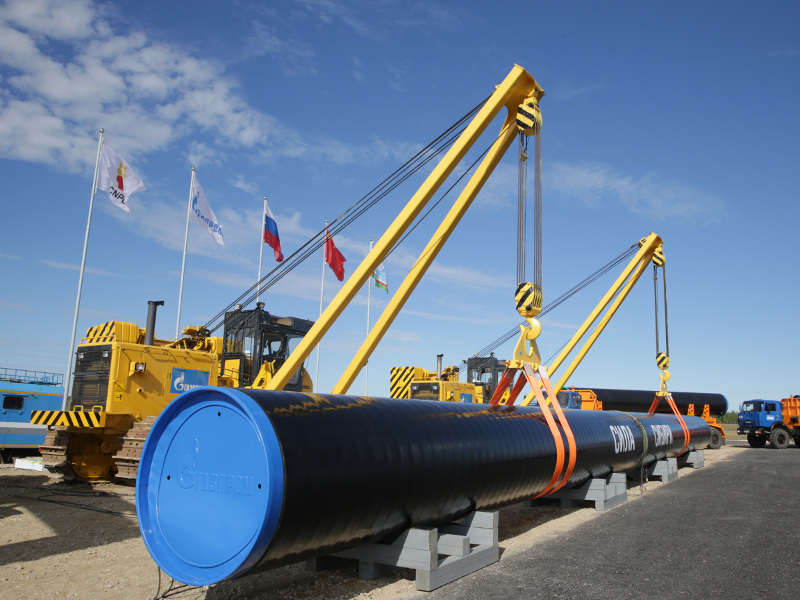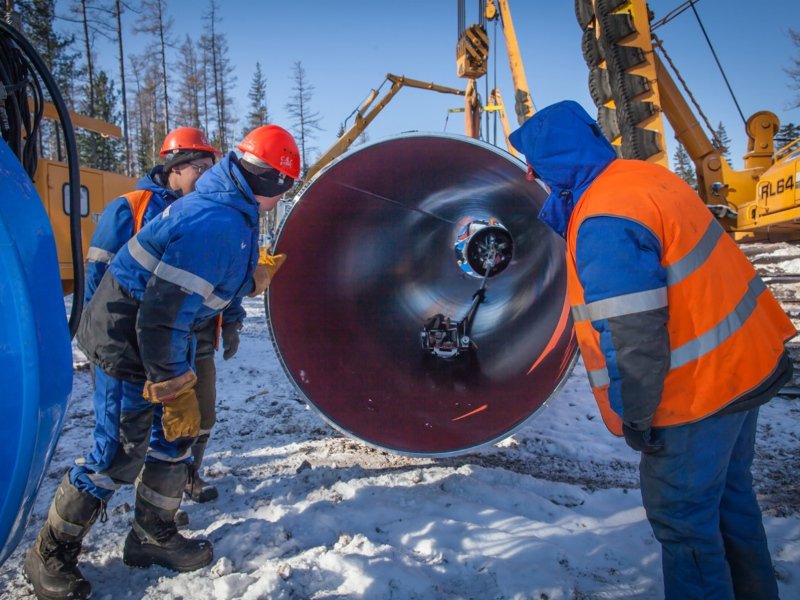The Power of Siberia, the first cross-border pipeline to supply Russian gas to China, came on-stream in December 2019. Developed and operated by Russia’s state-owned gas behemoth Gazprom, the pipeline runs approximately 3,000km from the gas production centres in eastern Russia to the north-east Chinese border near Blagoveshchensk.
A Chinese pipeline that connects to the Power of Siberia gas transmission system is planned to extend for 3,370km from the Heilongjiang province to Shanghai. Construction on the £43bn ($55bn) Power of Siberia pipeline was started in September 2014, while gas feeding for the 2,200km section of the pipeline connecting China was completed in October 2019 before the start of cross-border gas supply in December 2019.
The remaining 800km section of the pipeline is expected to be operational in 2022.
Details of the Russia-China gas deal
The Power of Siberia pipeline project is backed by a strategic long-term gas supply deal signed between Russia and China in May 2014.
Project Gallery
-

The Power of Siberia is the first gas pipeline built to supply Russian gas to China. Image courtesy of Gazprom.
-

Gas supply to China through the Power of Siberia pipeline was started in December 2019. Image courtesy of Gazprom.
-

Construction of the Power of Siberia pipeline was started in September 2014. Image courtesy of Gazprom.
-

The length of the Power of Siberia pipeline is approximately 3,000km. Image courtesy of Gazprom.
Gazprom and the Chinese state-owned China National Petroleum (CNPC) signed a £309bn ($400bn) gas sales and purchase agreement in May 2014, which is considered to the biggest gas supply contract ever signed in the history of Russian gas industry.
Gazprom agreed to supply 38 billion cubic metres (bcm) of gas per annum via the eastern route to CNPC for a period of 30 years, as part of the contract.
The gas deal was signed in the aftermath of Russia’s annexation of Crimea in March 2014 that triggered economic sanctions against Russia from the US and the European Union (EU).
The strategic gas supply agreement underlined Russia’s intention to tap into China’s burgeoning market for gas, while diversifying its gas exports away from Europe that accounts for approximately two-thirds of Russia’s total gas exports.
Similarly, China saw Russia, the country with the world’s biggest natural gas reserves, as a long-term strategic partner for its energy security. It also found piped gas from Russia as an attractive option compared to the costlier liquefied natural gas (LNG) imports.
Gazprom and CNPC also signed a preliminary agreement for piped gas supply from the western Siberian gas fields to China via the western route (Power of Siberia 2 gas pipeline), in May 2015.
The Power of Siberia pipeline design and route details
The 3,000km gas pipeline runs through three regions in eastern and far-east Russia namely AIrkutsk, Yakutia, and Amur. The 2,200km completed section stretches from Yakutia to the Chinese border in the Amur region. The remaining 800km section will run from AIrkutsk to Yakutia.
The route of Power of Siberia pipeline includes wetlands as well as mountainous and permafrost areas with harsh environmental conditions with the lowest air temperatures ranging between -62C and -41C.
The pipeline also involves a major crossing under the Amur River within the trans-border jurisdiction. Gazprom and CNPC signed an EPC contract for the construction of the submerged crossing of the cross-border section in Hangzhou (China) in September 2016. Construction for the river crossing in the Chinese portion was started in April 2017.
The Power of Siberia pipeline comprises 1.42m-diameter pipe joints with anti-friction coating inside and anti-corrosion protective layers made of nano-composite materials on the outside.
The operating pressure of the pipeline is 9.8 megapascal (MPa), while the design gas export capacity of the pipeline is 38bcm/y.
Gas flow in the Russia-China pipeline
The gas flow is planned to be gradually increased in the Power of Siberia pipeline to China. The total gas flow in the pipeline in 2020 is expected to be 4.6bcm, which is expected to be increased to 10bcm in 2021. The pipeline is expected to reach its nameplate capacity of 38bcm/y by 2025.
Gas supply for the Power of Siberia pipeline
The Power of Siberia pipeline currently receives gas supply from the Chayandinskoye gas field located in the Yakutia region of Russia.
With 1.2 trillion cubic metres (tcm) of estimated gas reserves, it is considered to be the biggest gas field in Yakutia. The Chayandinskoye gas field is expected to reach its annual design output of 25bcm in 2024.
The pipeline is scheduled to start receiving gas from another gas field named Kovyktinskoye (Kovykta) in the Irkutsk region of eastern Russia by the end of 2022. The Kovykta field is estimated to contain 2.7tcm of recoverable gas resources.
Gas supply from the Kovykta gas field will be achieved through the construction of the 800km stretch of the Power of Siberia pipeline between the Kovyktinskoye and Chayandinskoye gas fields.
Contractors involved
Gazprom Transgaz Tomsk, a subsidiary of Gazprom, was engaged as the main construction contractor, while VNIPIgazdobycha, another subsidiary of Gazprom, served as the general design contractor for the Power of Siberia pipeline project.
The pipe manufacturers for the Power of Siberia pipeline included Izhora pipe plant, a subsidiary of Severstal, Vyksa Steel Works (VSW), and Chelyabinsk Pipe Rolling Plant, which is a subsidiary of ChelPipe Group.
